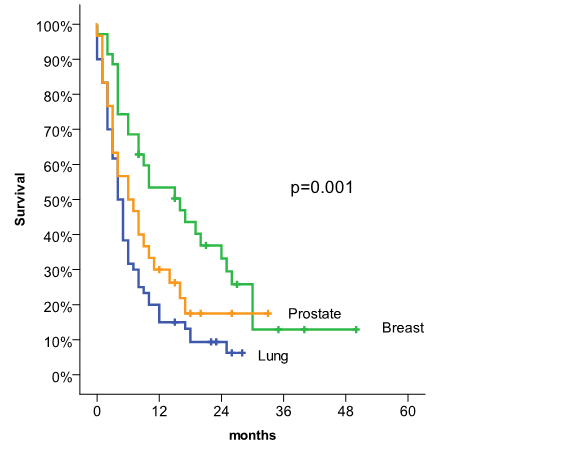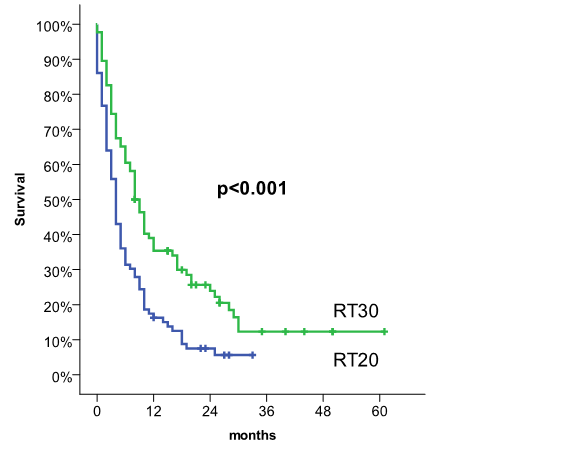Retrospective comparison of two radiotherapy schedules for spinal cord compression
Maria Hernandez Miguel,
Spain
PO-1461
Abstract
Retrospective comparison of two radiotherapy schedules for spinal cord compression
Authors: María Hernández Miguel1, Beatriz Gil Haro1, Marta López Valcárcel1, Raquel Benlloch Rodríguez1, Joaquín Velasco Jiménez1, Sofía Córdoba Largo1, Cristina de la Fuente Alonso1, Olga Engel1, Alfonso Valcárcel Díaz1, Lucía Paisán Palacio1, Sofía Santana Jiménez1, Patricia Sarrión Rubio de la Torre1, Sara Pérez Mata1, Francisco Javier Martínez Paredes1, Jesús Romero Fernández1
1University Hospital Puerta de Hierro, Radiation Oncology, Madrid, Spain
Show Affiliations
Hide Affiliations
Purpose or Objective
To compare improvement in pain, spinal cord compression (SCC) signs and overall survival (OS) between two common radiotherapy schedules: 20Gy in 5 fractions (RT20) and 30Gy in 10 fractions (RT30).
Material and Methods
From January 2016 to December 2020, 180 patients (p) with radiological or clinical SCC were treated. Clinical characteristics: 112 males (62.2%) and 68 females (37.8%); median age: 65 years (range 35-90). The most common primary tumours were lung (60p), breast (35p) and prostate cancer (30p). Thoracic spine was the location most frequent (148p; 82.8%) followed by lumbar spine (55p; 30.6%) and cervical spine (28p; 15.6%). Most patients were treated with RT20 (86p) or RT30 (87p). All patients were treated within 24h from the radiological diagnosis by MRI. Statistics: Student´s T test, chi-square and Kaplan Meier.
Results
One hundred and fifty-one patients presented symptoms or SCC signs (83.9%). Pain was the most common (150p; 83.3%) followed by motor deficits (41p; 22.8%), sensory deficits (21p; 11.7%) and autonomic dysfunction (2p; 1.1%).
Radiotherapy significantly improves pain (mean Visual Analog Scale of 7.13 vs 3.24 before and after treatment, respectively; p<0.001). There were no differences in pain relief or recovery from SCC signs between RT20 and RT30 schedules.
Two-year OS was better in breast cancer patients (33% vs 17.5% and 9.4% for prostate and lung cancer, respectively; p=0.001).
A better OS was observed for the RT30 schedule (23.9% vs 7.5% for RT20; p<0.001).


Conclusion
RT20 and RT30 schedules are equally effective in the management of SCC. The lower OS of the RT20 patients strongly suggests a selection bias towards the use of this scheme in patients with a worse prognosis.